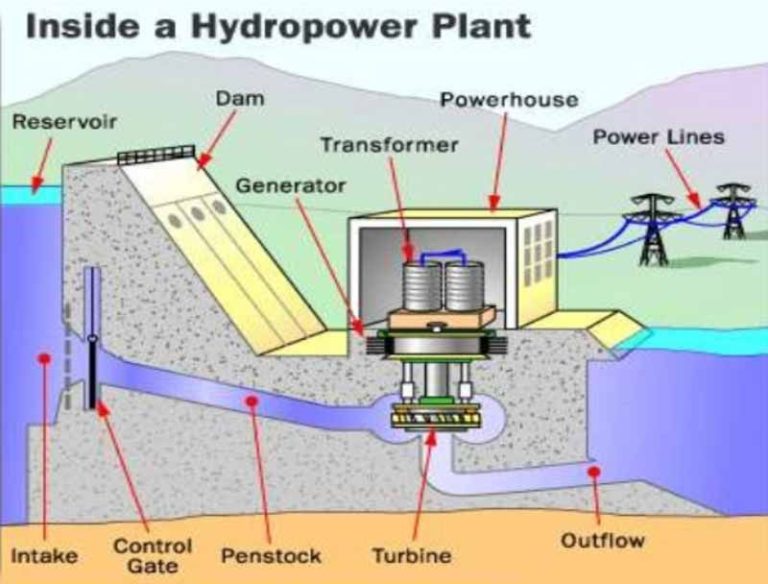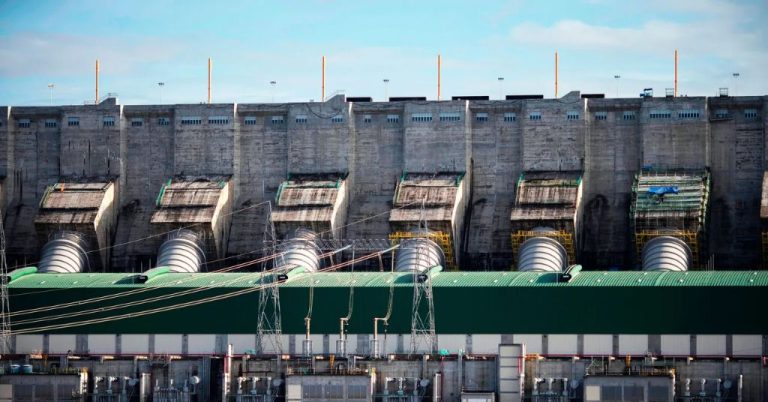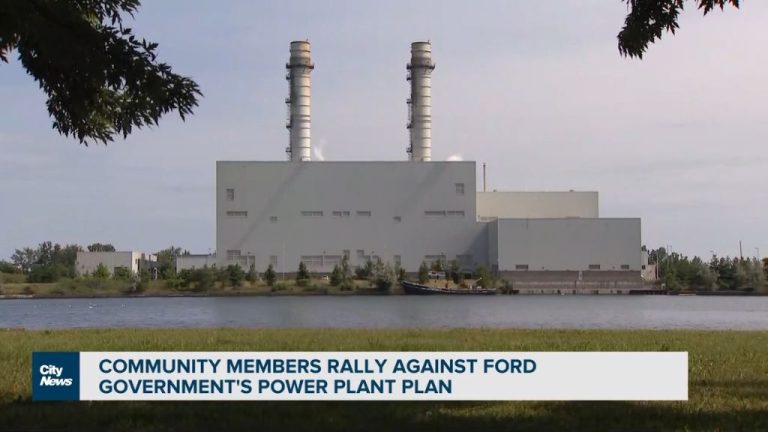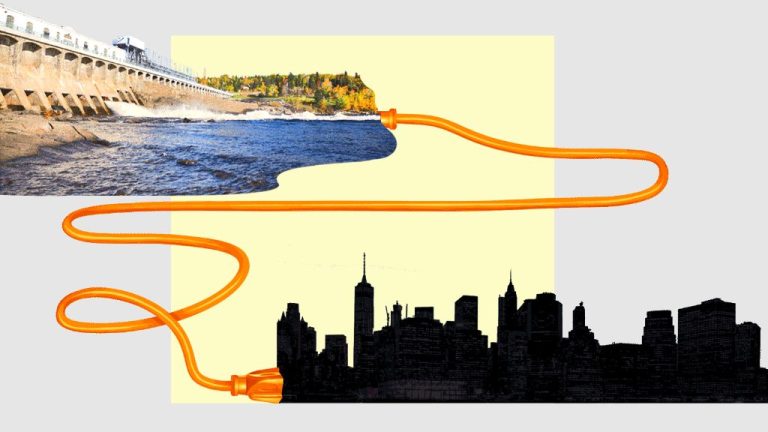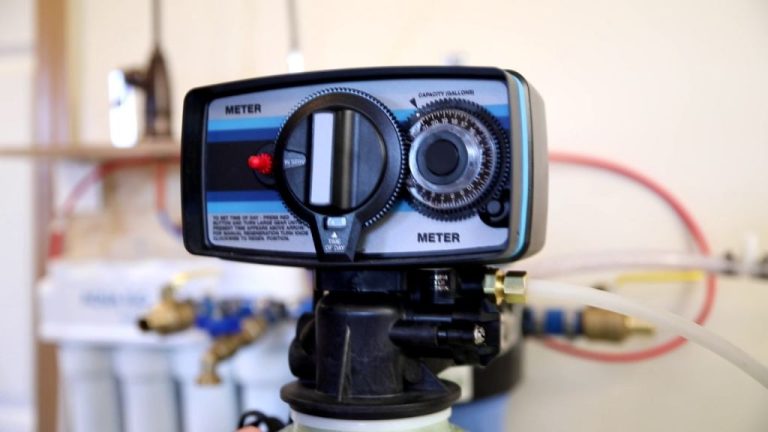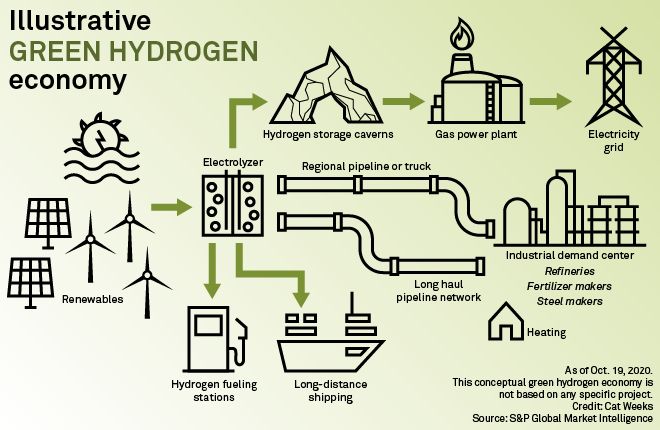Is Hydropower Energy Efficient?
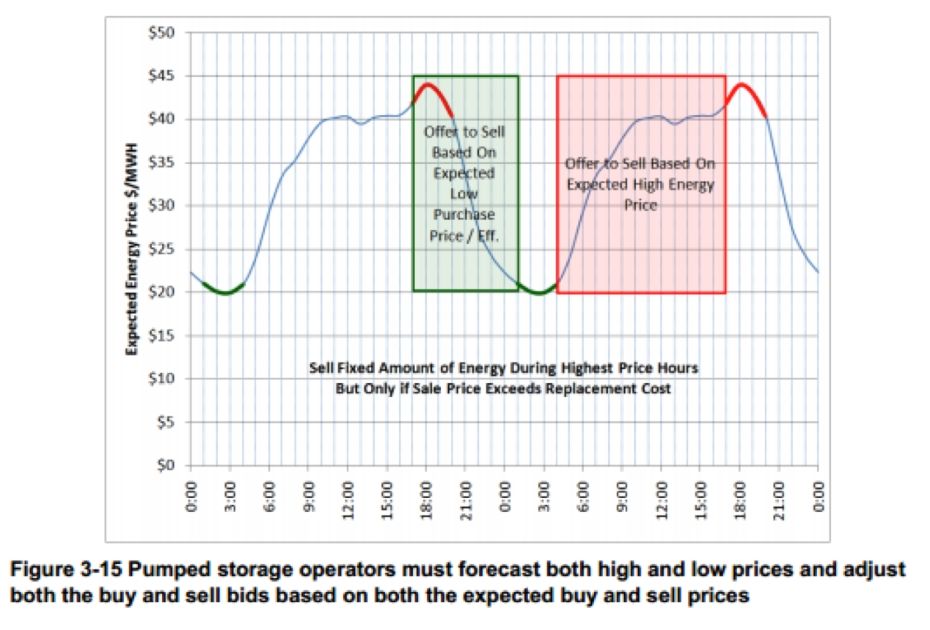
Hydroelectric energy, or hydropower, is electricity generated by harnessing the natural flow of water through rivers, dams, reservoirs or other systems. Hydropower is considered a renewable energy source as it relies on the constant movement of water to produce power without depleting reserves or producing emissions associated with fossil fuels. Energy efficiency refers to using less energy to provide the same level of energy service, resulting in less fuel usage or energy waste.
Hydropower is considered one of the most efficient energy sources, with modern hydropower facilities capable of converting more than 90% of the available energy into electricity. The energy efficiency of hydropower stems from the simplicity of the process – water flowing through a turbine powers generators with very little energy lost in between. Hydropower’s efficiency can also be attributed to the density of water, as more dense mediums contain greater potential energy. However, efficiency metrics depend on the site conditions and project purpose, so hydropower projects are rarely perfectly efficient.
Hydropower Basics
Hydropower plants utilize the power of flowing or falling water to generate electricity. The most common type of hydropower plant uses a dam on a river to store water in a reservoir. When the water is released from the reservoir, it flows through a turbine, causing it to turn. This turbine spins a generator to produce electricity (Energy.gov, 2023). There are three main types of hydropower facilities:
– Run-of-river: Channels a portion of a river through a canal or penstock to spin a turbine. These plants do not require dams or water storage reservoirs.
– Dam/reservoir: Stores water in a reservoir behind a dam, then releases it to turn turbines when power generation is needed.
-Pumped storage: Stores energy by pumping water from a lower reservoir to an upper reservoir. When electricity demand is high, water is released back down to turn turbines.
Hydroelectric dams account for most of the hydropower generation in the U.S. today. They provide a convenient way to store energy and flexibly generate power when it is needed most (EIA, 2023).
Hydropower Efficiency Metrics
Two key metrics used to measure the efficiency of hydropower plants are the capacity factor and plant utilization rate.
The capacity factor measures a plant’s actual power output over a period of time compared to its potential maximum output if it operated at full capacity continuously over the same period. According to data from the U.S. Energy Information Administration, the average capacity factor for hydropower plants in the U.S. was around 39% in 2019.[1] This means that on average, hydropower plants produced 39% of the energy they could have produced if operating at maximum output all the time.
The plant utilization rate specifically measures the ratio between a plant’s actual generation and its potential generation based on available water resources. According to one analysis, global average plant utilization was 46% in 2020, with significant regional variation.[2] Maximizing utilization rate depends on factors like sufficient water flow, storage reservoirs, and transmission capacity.
Increasing these efficiency metrics is an important way to get more power from existing hydropower assets. Approaches like modernizing turbines, optimizing operations based on weather forecasts, and adding pumped storage capabilities can all improve capacity factors and utilization rates.
[1] https://finmodelslab.com/blogs/kpi-metrics/hydroelectric-power-generation-kpi-metrics
[2] https://finmodelslab.com/blogs/kpi-metrics/hydroelectric-power-kpi-metrics
Hydropower vs Other Renewables
Hydropower has some key efficiency advantages compared to other renewable energy sources like solar and wind. According to Canhydro, wind power plants can harness up to 50% of the energy passing through them, while solar power plants only convert about 20% of available energy. Modern hydro turbines are even more efficient at over 90% conversion of the water’s power into electricity.
As noted by Ecoflow, hydropower systems can generate a high load factor consistently over time, while solar and wind depend on weather conditions. Hydropower performs well in all seasons and weather, while solar works best on sunny days and wind turbines operate optimally on windy days. This makes hydropower’s output more reliable and consistent.
According to Electrical Engineering Portal, hydropower complements wind and solar as a renewable option. Wind and solar produce the most power at different times, so combining hydropower can create a more stable renewable energy system. Overall, hydropower provides unique efficiency and reliability benefits compared to other leading renewable sources.
Environmental Impact
Hydropower can have significant environmental impacts, especially large-scale hydroelectric dams. The reservoirs created by dams flood large areas of land, displacing wildlife, people, and natural habitats in the process (1). Large dams can have substantial environmental footprints, affecting connectivity of the watershed, water quality, flow patterns, wildlife, fish migration, and greenhouse gas emissions (2). New hydro projects must undergo extensive environmental impact assessments to evaluate and mitigate potential damage.
Flooding land for a reservoir destroys forests, plant life, agricultural land, wildlife habitats, and more. Hydropower projects sometimes require resettling human populations as their homes are immersed, impacting local communities. Damming rivers also fragments the river ecosystem, preventing fish migration and disrupting natural cycles. Fish can become injured or killed passing through dams. Downstream flows can be altered, affecting river health. Hydro dams have also been linked to increased erosion, loss of nutrients, and higher water temperatures.
While hydropower is renewable and low-emission, dams still produce greenhouse gas emissions from decomposing vegetation and sediment after flooding land. Reservoirs are a major source of methane, a powerful greenhouse gas. However, compared to fossil fuel power plants, hydropower’s lifetime emissions are generally much lower.
Economic Considerations
Hydropower requires significant upfront infrastructure investments to construct dams, reservoirs, turbines, and power facilities. According to the U.S. Army Corps of Engineers, the average cost for new hydropower project construction is estimated to be between $1,500-$2,500 per kW of installed capacity (Source). Large-scale projects like the Three Gorges Dam in China required over $26 billion in infrastructure costs.
Once constructed, hydropower has relatively low operation and maintenance (O&M) costs compared to fossil fuel plants. However, periodic turbine repairs, dam maintenance, and sediment removal can add up. A 2021 study found O&M costs for an average hydropower facility to be around $30/kW-year (Source). These ongoing costs must be weighed against hydropower’s ability to produce inexpensive electricity over many decades.
Social Impact
Hydropower projects can have significant social impacts on local communities and society as a whole. One major impact is the potential displacement of communities when large areas of land are flooded to create the reservoir for a dam. According to one report, unless governments plan for resettlement and compensation, hydropower projects can negatively impact “as many as 80 million people… displaced by dam construction” globally. However, when managed responsibly, hydropower reservoirs can also provide recreational benefits for local residents and tourists. Activities like boating, fishing, and swimming become possible with the new bodies of water. Overall, the social effects of hydropower depend greatly on project planning and management. With careful consideration for communities, hydropower can generate electricity while also enhancing recreational opportunities.
Sources:
https://www.un.org/esa/sustdev/sdissues/energy/op/hydro_cernea_social%20impacts_backgroundpaper.pdf
Key Benefits of Hydropower
Hydropower is considered a renewable and sustainable energy source because it uses the earth’s water cycle to generate electricity. The water flows naturally and is not consumed in the process, allowing it to be reused repeatedly (https://www.energy.gov/eere/water/benefits-hydropower). Hydropower can provide energy for generations if properly maintained.
Hydropower also enhances grid reliability since it can quickly go from zero power to maximum output, allowing it to be used like a giant battery to complement intermittent renewable sources like wind and solar. Hydropower plants provide essential grid flexibility and stability services, helping balance electricity supply and demand (https://www.enelgreenpower.com/learning-hub/renewable-energies/hydroelectric-energy/advantages). With pumped storage capabilities, water can be recycled between two reservoirs at different elevations to store excess energy and generate power on demand.
Challenges and Limitations
While hydropower is a renewable and energy efficient energy source, it does face some challenges and limitations. Two major ones are droughts and geographical constraints.
Droughts can significantly impact hydropower generation as dams and reservoirs depend on adequate water flow. During drought conditions, water levels can drop substantially which reduces the amount of power that can be generated. According to the U.S. Energy Information Administration, hydropower generation in the United States fell by nearly 20% during the California drought from 2011-2017 1. This vulnerability to changing weather and precipitation patterns is a key challenge.
There are also geographical limitations to hydropower. Dams require specific topography and landscapes to create reservoirs and utilize gravity for power generation. Hilly or mountainous regions near rivers are ideal locations. However, many parts of the world lack the natural features needed to support large-scale hydropower projects. The availability of suitable sites can be a constraint on further hydropower development 2.
Conclusion
Hydropower is a versatile and efficient form of renewable energy. The efficiency metrics discussed show that modern hydropower facilities can convert over 90% of available energy into electricity. Factoring in full lifecycle emissions, hydropower has one of the lowest carbon footprints among renewables. It also has the highest capacity factors, allowing consistent and reliable power generation.
The main efficiency advantages of hydropower are low operational costs after initial construction, flexibility to generate on demand, and long asset lifetimes. The barriers are high upfront capital costs and geographical limitations for suitable new dam sites. Overall, hydropower’s efficiency and sustainability make it an important and competitive component of the world’s renewable energy portfolio.
While not without some environmental and social impacts, hydropower provides baseload renewable energy at a large scale that would be difficult to replace with other sources. With responsible planning and management, hydropower can play a key role in the transition to a cleaner energy system.

